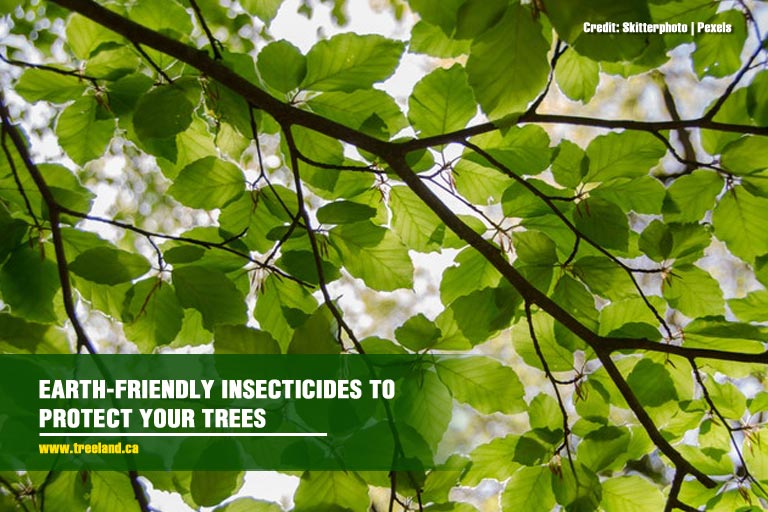
Any good gardener would love to keep their plants free of pests and diseases. Ward off harmful critters in your garden with these homemade insecticides. Not only are these extremely effective, but they are also eco-friendly. These insecticides allow you to protect your trees without any negative impact on the planet and your family’s health.
Vegetable Oil
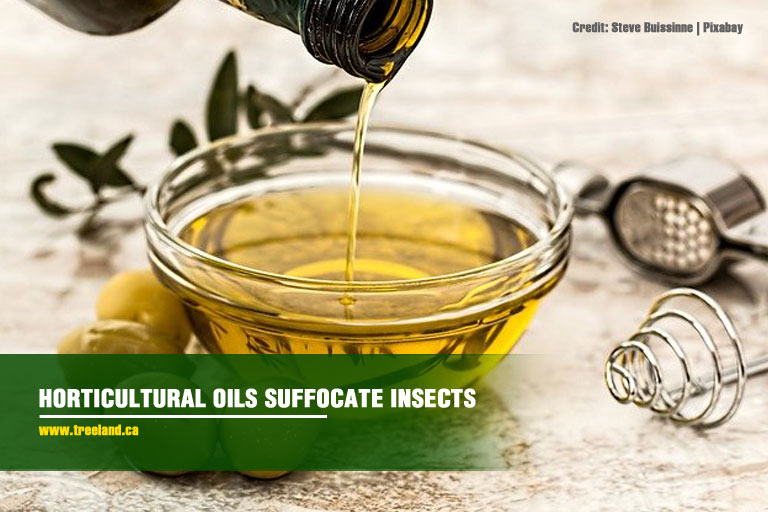
Vegetable oil is one of many horticultural oils. The use of oils as natural, eco-friendly pest control rose to prominence as horticulturists saw that they were perfectly suited for fruit trees. Fruit trees presented a tricky challenge: they are vulnerable to pests, but regular chemical pesticides won’t be suitable for them because they produce food. Using standard store-bought pesticides might pose health risks to both the tree and the humans who will eat the fruit. Harsh, artificial ones might also kill the insects beneficial to your garden, the friendly critters that we depend on for pollination and crop growth.
Oil-based insecticides were first formulated particularly to protect fruit trees during their dormant season (the stage in the life cycle of plants when their growth stops and their metabolism slows down; this occurs during cold months). These natural insecticides kill off aphids, scale, and mites over the winter.
How to Use
- Mix 1 cup of vegetable oil with 1 tablespoon of gentle liquid soap. Shake the mixture thoroughly and store it.
- Before use, place 2 teaspoons of the mixture in a spray bottle, and add 1 quart of water. Shake thoroughly.
- Spray directly on affected plants.
How It Works
Horticultural oils suffocate insects. They coat the insect’s exoskeleton and clog spiracles (pores) that insects use to breathe.
Oils also stunt the development of insect eggs, as oils mess up their metabolism. In adult insects, oils cause starvation.
Works On
Adelgids, aphids, caterpillar eggs, leafhoppers, mealybugs, mites, scale, spider mites, thrips, whiteflies, and powdery mildew
Liquid Dishwashing Soap
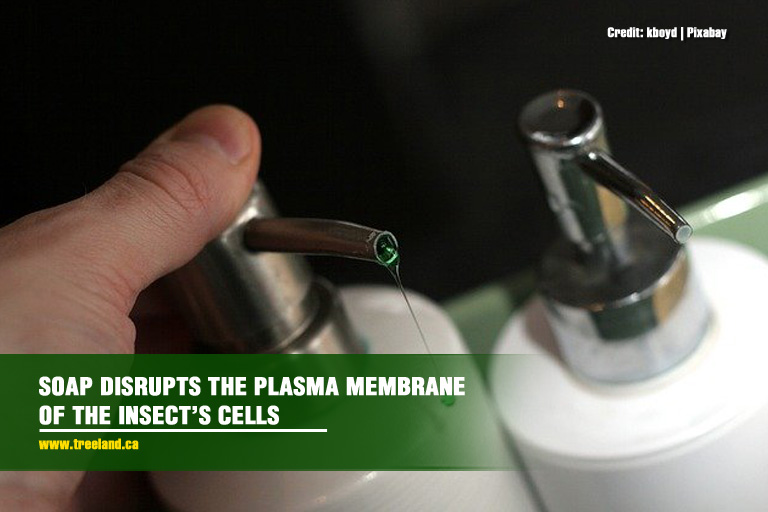
You can buy horticultural soap from garden supply stores or make your own with the instructions below. These are safe to use on both indoor and outdoor greens, including edible plants like vegetables. They don’t leave any unpleasant residue and are nontoxic for other animals.
How to Use
1. Mix 1 cup of oil (vegetable, peanut, corn, soybean, or other kinds) and 1 tablespoon of gentle liquid dishwashing soap, and store. Stay away from soaps with bleach and degreaser or the kind made for automatic dishwashers, as these tend to be harsher.
-
-
- Alternative: If you don’t have liquid soap, bar soap can be used as a substitute. Cut off a pinch of the bar, and place it in 1 gallon of water. Let it sit overnight before making the mixture.
- Optional: Add ground red pepper or garlic to the mixture to fend off chewing pes
-
2.Before use, combine 2 teaspoons of the solution and 1 cup of warm water. Place the new mixture in a spray bottle.
3.Spray directly on affected plants.
Apply the solution as often as necessary, but be careful not to use this during noon or hot parts of the day. Its effectiveness is reduced if the solution dries or is washed away. Using it in temperatures over 32 degrees Celsius will also increase the risk of phytotoxicity (causing retarding of plant growth and other negative effects) and even burning of the plant’s leaves. The best times to use the solution are in the early morning and evening during moderate or cool days.
As with any new treatment you try, test out a small dose on a section of a plant to see its effects and how the plant reacts to it. If it does not harm the plant, adjust the mix accordingly or refine the solution until you get maximum effectiveness.
How It Works
Horticultural soaps work similarly with horticultural oils. They disrupt the plasma membrane of the insect’s cells, causing suffocation.
Works On
Beetles; small soft-bodied insects like aphids, mealybugs, spider mites, and whiteflies; and leaf fungi like honeydew and sooty mould
Neem Oil
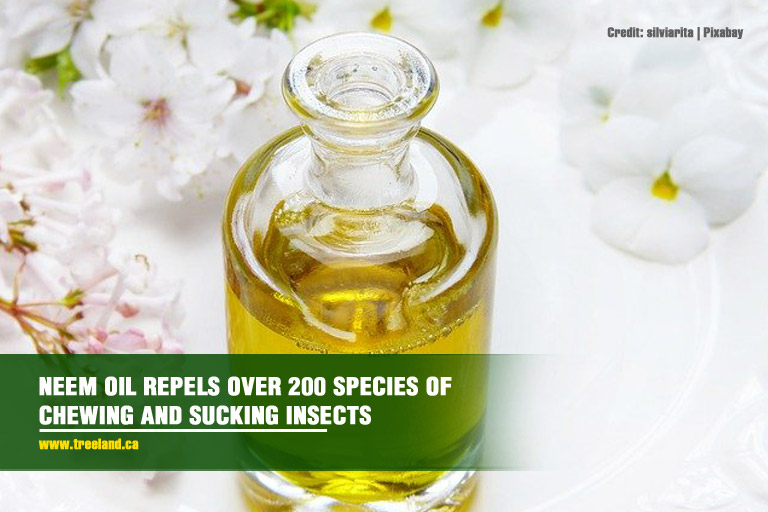
Neem oil is sourced from the South Asian and Indian ornamental shade tree Azadirachta indica. Aside from being the source of eco-friendly, natural insecticide, the tree is also used to produce wax, oil, soap, and cosmetic products.
Most parts of the neem tree can yield oil, but the tree’s most potent insecticidal compound, Azadirachtin, is largely concentrated in its seeds.
How to Use
Most store-bought neem oils come with instructions. Follow what is says on the product label, or try out the basic mixture below:
- Combine 1 teaspoon of neem oil, 1 teaspoon of gentle liquid soap, and 1 quart of water. Shake thoroughly.
- Spray directly on affected plants about once a week. As with other oil-based insecticides, thoroughly coat the affected leaves with the solution, especially the spots where the pests or fungi are largely accumulated.
As with other treatments, apply this with caution. Test out a small dose on a section of the plant, and wait for 24 hours. Check to see if it does any damage to the leaves. When proven harmless, continue application.
Use the solution during the early morning and evening or when the plant is not under direct sunlight. This is to avoid burning the leaves and to let the plant absorb the solution better. Do not apply the solution in extreme temperatures and when the plant is under stress because of drought or excessive watering.
How It Works
Neem oil insecticide has been observed to be most effective on young plants. Its half-life (the duration it takes for its effectiveness to reduce in half) in the soil is 3 to 22 days and in water, 45 minutes to 4 days.
When sprinkled around the soil of plants, neem oil is absorbed and distributed throughout the plant’s vascular system. Insects consume it with the plant when feeding. The oil’s active insecticidal compound, Azadirachtin, reduces the insect’s appetite, hinders larvae development, and disrupts mating behaviour, effectively keeping the pests from multiplying.
Like vegetable oil, neem oil also suffocates the insects by blocking their spiracles.
Works On
Over 200 species of chewing and sucking insects like aphids, mealybugs, scale, and whiteflies; mites; and powdery mildew
Diatomaceous Earth
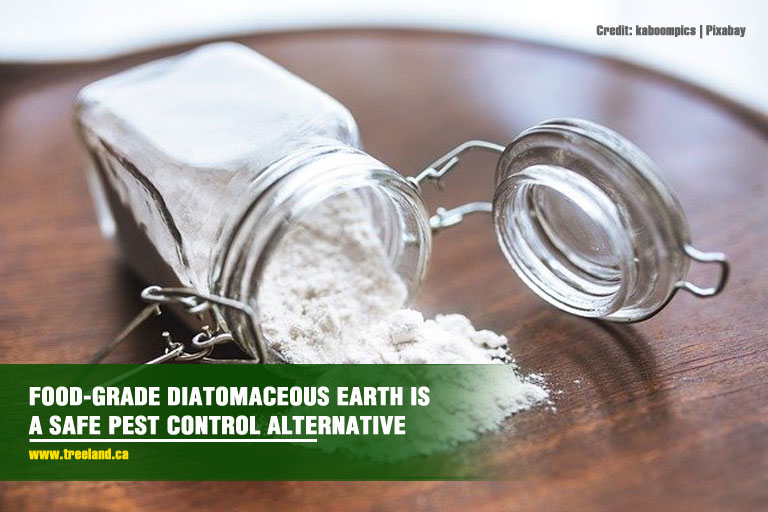
Diatomaceous earth is composed of the fossils of small, aquatic animals called diatoms. This is commercially available in 2 forms: pool-grade and food-grade. For gardening purposes, use food-grade diatomaceous earth. It is eco-friendly pest control that’s safe for human consumption in small doses.
How to Use
- For bulbs – Before planting, dust the whole bulb or sprout with diatomaceous earth.
- In the greenhouse – Scatter diatomaceous earth to create a barrier around seedling trays and small plants.
- In the garden – Sprinkle diatomaceous earth on dry leaves. Check the weather forecast of the day, and make sure it won’t rain and the wind won’t be strong so as to keep the insecticide dry and undisturbed.
Warning: Be careful not to place diatomaceous earth on flower heads. You don’t want to harm bees since they are vulnerable to the negative effects.
How It Works
Food grade diatomaceous earth is non-toxic and does not need to be consumed by insects to be effective. It works like a sponge, absorbing oils and fats from the cuticle of the insect’s exoskeleton.
Under a microscope, food-grade diatomaceous earth looks like small, spiked cylinders. The “barbs” pierce the insect’s waxy exoskeleton, wounding them and releasing their fluids.
Along with its sharp, abrasive texture, diatomaceous earth’s absorbent quality causes dehydration in insects.
Works On
Aphids, asparagus beetle, borers, thrips, cutworm, earwigs, Mexican bean beetle, mites, pillbugs, and potato beetle
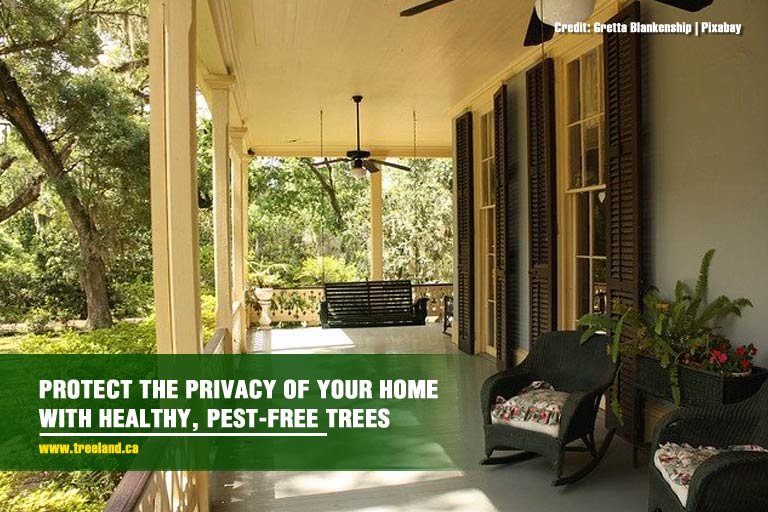
Caring for your trees is crucial in maintaining a healthy garden. If you’re looking to add more specimens to act as a green barrier of protection around your lawn, Caledon Treeland will be happy to lend you a hand. Call us at (905) 880-1828. We provide tree care and arboreal services to the following areas: Central and Southern Ontario, Caledon, Bolton, Toronto, and GTA.
